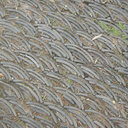[Protective effects of Ginkgo Terpene Lactones Meglumine Injection on focal cerebral ischemia in rats].
Schlüsselwörter
Abstrakt
To investigate the protective effects of ginkgo diterpene lactone meglumine injection (GDLMI) on cerebral focal ischemia reperfusion injury induced by middle cerebral artery occlusion (MCAO) in rats, and explore its possible mechanism. One hundred and forty male SD rats were randomly divided into sham operation group, model group, ginkgo biloba extract injection (Ginaton, 1.0 mL•kg⁻¹) group, nimodipine (0.4 mg•kg⁻¹) group, and GDLMI (5.2, 2.6, 1.3 mg•kg⁻¹) groups; All of rats received corresponding drugs by tail vein injection 4 days before operation (normal saline in model group and sham operation group). Except the sham operation group, the cerebral ischemic stroke model was established by MCAO method in right brain of the other rats. After 3 h of ischemia, all the animals received intravenous administration again. The neurobehavioral scores of rats after ischemia-reperfusion were evaluated and the infarct rate of brain tissue was observed by TTC staining. The super oxide dismutase (SOD), glutathione (GSH), malondialdehyde (MDA) and lactic acid (LA) contents in brain tissue homogenate and the concentration of Ca2+, glutamate (Glu) and aspartate (Asp), creatine phosphate kinase (CK-BB) and lactate dehydrogenase (LDH) content changes in cerebrospinal fluid were measured. As compared with the sham operation group, the cerebral infarction rate was increased significantly in the model group; the content of MDA and LA in the homogenate of brain tissue was increased, and the content of GSH and SOD was decreased; in cerebrospinal fluid, Ca2+ concentration was decreased, and the content of Glu and Asp, CK-BB and LDH increased significantly. As compared with the model group, the high and medium dose GDLMI groups can significantly reduce the cerebral infarction rate and improve the symptoms of neurological impairment; increase SOD and GSH activity, reduce MDA and LA content in serum; increase Ca2+ concentration in cerebrospinal fluid and decrease the content of neurotransmitter Glu and Asp as well as CK-BB and LDH. GDLMI could obviously improve neurologic impairment in model rats, and the mechanism may be related to recovering the blood brain barrier, scavenging free radicals, decreasing free Ca2+ inflow into the cells and the content of excitatory amino acid in cerebrospinal fluid to improve its protective effect on cerebral ischemia.




